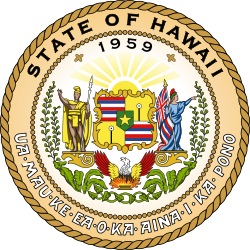| ||||||||||||||||||||||||||||
All 2 Hawaii seats to the United States House of Representatives | ||||||||||||||||||||||||||||
|---|---|---|---|---|---|---|---|---|---|---|---|---|---|---|---|---|---|---|---|---|---|---|---|---|---|---|---|---|
| ||||||||||||||||||||||||||||
 County results Democratic: 60–70% 70–80% | ||||||||||||||||||||||||||||
| Elections in Hawaii |
|---|
 |
The 2006 congressional elections in Hawaii were held on November 7, 2006, to determine who was to represent the state of Hawaii in the United States House of Representatives for the 111th Congress. Hawaii has two seats in the House, apportioned according to the 2000 United States census. Representatives are elected for two-year terms.




